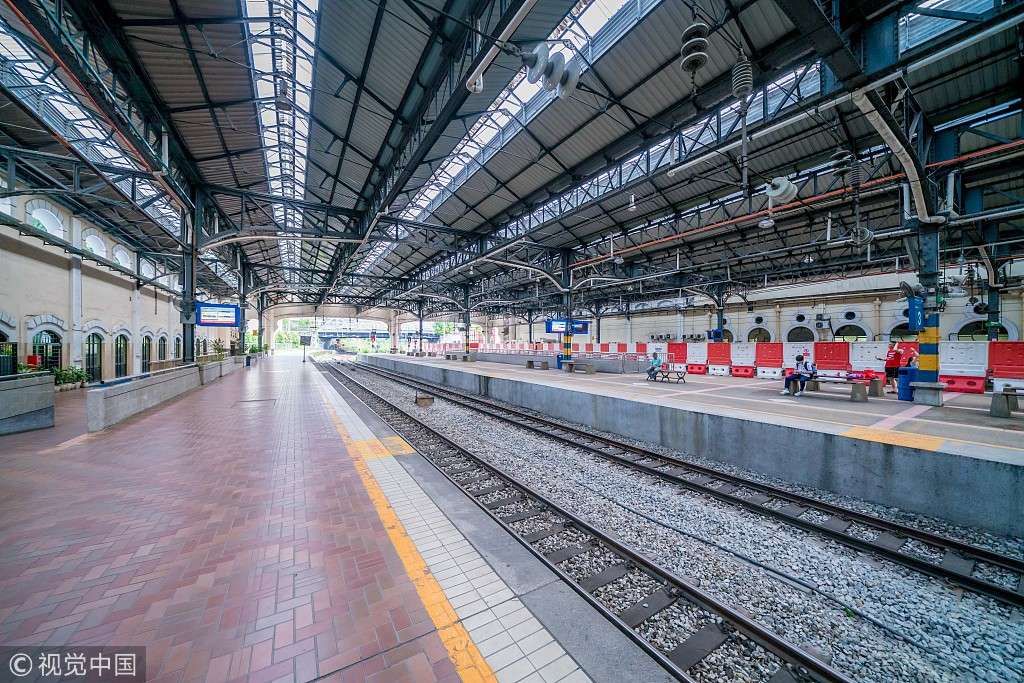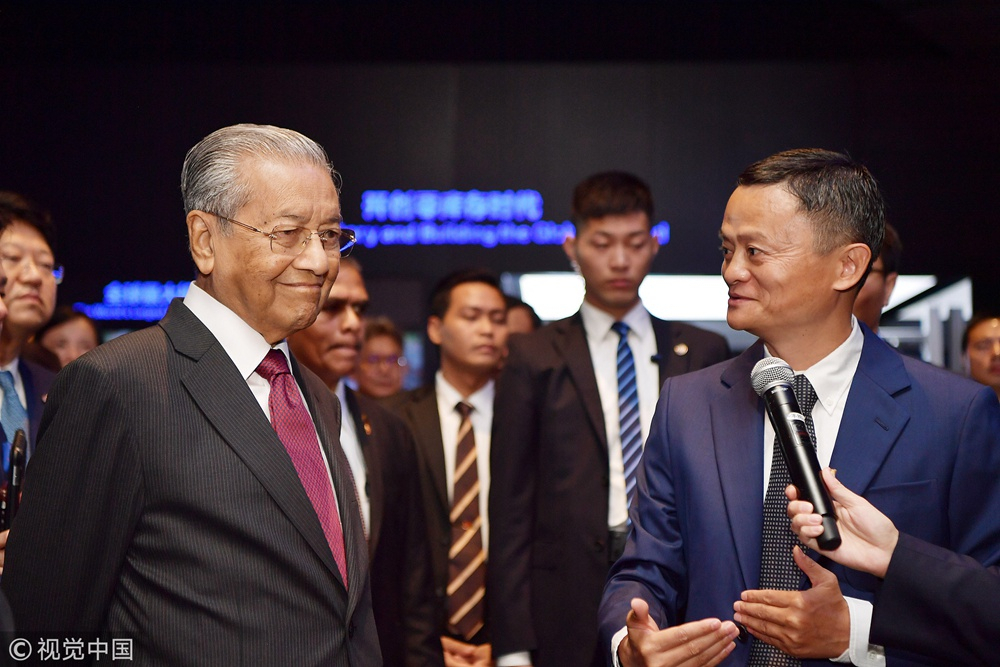
Opinion
15:00, 13-Apr-2019
Malaysia's BRI renegotiation shows the project's durability
Tom Fowdy

Editor's note: Tom Fowdy is a British political and international relations analyst and a graduate of Durham and Oxford universities. He writes on topics pertaining to China, the DPRK, Britain and the United States. The article reflects the author's opinion, and not necessarily the views of CGTN.
On April 12, Malaysia resumed a deal with China to establish a high-speed railway line along the country's east coast, a project which is part of the Belt and Road Initiative (BRI). The scheme had originally been canceled the previous year following the return of veteran politician Mohammad Matahir as the country's prime minister, which many analysts assumed was a geopolitical pushback against Beijing. However, Kuala Lumpur did not abolish the project outright, but instead proceeded to renegotiate its terms and costs with China accordingly.
The new deal is a blow to the critics of the initiative. Not only does it act as a solemn reminder that Belt and Road projects continue to be in the economic interest of participating states, but it also illustrates China is prepared to offer considerable flexibility and space to their concerns and broader national interests. With the costs thus being substantially reduced by Malaysia, this challenges the narrative that the BRI is nothing more than “debt trap diplomacy” and is of a predatory nature. Rather, it is a durable project that will continue to adapt, refine and respond to the strategic environment around it accordingly.
Why did Malaysia opt to renegotiate the East Coast HS railway? The answer lies in the delicate balance of the country's domestic politics. Owing to the legacy of colonialism, the country has long haggled with ethnic insecurities between the dominant Malay group and the Chinese minority of which was placed there as a labour force under British rule.

Kuala Lumpur railway, Malaysia. /VCG Photo
Kuala Lumpur railway, Malaysia. /VCG Photo
These tensions have made the broader national identity of the Malay group insecure, resulting in growing Malay and Islamic nationalist impulses within the country's politics. In turn, this has translated into an underlying caution against China itself, meaning all interactions with Beijing must be balanced against the ethnic paradigm of domestic politics.
Nevertheless, Malaysia is very much aware that it reaps great benefits from having healthy economic ties with Beijing. Despite the considerations above, by no means is the country prepared to isolate, shun or throw China out of the picture. Hence when the Belt and Road Initiative came along, there was no question as to what Kuala Lumpur's position would be. In 2017, former Prime Minister Najib Razak jumped in quickly to sign a plethora of agreements, including of course the East Coast High-Speed Railway.
Still owing to the dynamics of local politics, this was criticized by Matahir Mohammad, who accused Razak of “selling out the country.” When he returned to power, he seemingly canceled the project. Western-centric analysts cheered as they assumed that it was the start of a geopolitical pushback against the BRI and that Malaysia was taking a stand against Beijing.
But that wasn't the case. Instead, the veteran leader sought to renegotiate the railway on more favorable terms, making it less controversial to the Malaysian domestic political paradigm and in tune with the country's national interest accordingly. There was never any doubt from him that such a project could, with adjustments, benefit his country.

Malaysian Prime Minister Mahathir Mohamad (L, front) talks with Jack Ma (R), chairman of China's e-commerce giant Alibaba Group in Hangzhou, east China's Zhejiang Province, August 18, 2018. /VCG Photo
Malaysian Prime Minister Mahathir Mohamad (L, front) talks with Jack Ma (R), chairman of China's e-commerce giant Alibaba Group in Hangzhou, east China's Zhejiang Province, August 18, 2018. /VCG Photo
Thus, what the new deals reveal is not a geopolitical pushback, but a delicate balance between maintaining the country's status quo whilst still advocating productive economic ties with Beijing. Never did Matahir shut out China or embark on a crusade against the Chinese; he visited the country multiple times and worked hard to lobby his position. Through shrewd and cautious diplomacy, he has succeeded. What is more notable however is that China was prepared to listen to him and respond accordingly.
What does this tell us about Belt and Road? It challenges the “debt trap” narrative that Washington is advocating. The fact that China was prepared to offer the same project on a reduced cost in line with terms Malaysia wanted is far a cry from the way the U.S and many analysts are attempting to present the scheme.
It shows that not only do countries continue to see BRI projects in line with their economic interests provided they are attentive to local needs, it also illustrates that China's own attitude towards the project is pragmatic, adaptable and not a one-way street without accountability where countries have no say or ability to voice their concerns.
Thus as a whole, Belt and Road should not be analyzed in the light of American-centric discourses and simplistic clichés, but with the scope to assess that as time goes by, it is capable of learning, growing and refining itself through experience. Countries all around the world continue to sign MoUs and join the initiative, despite the objections of some. The new China-Malaysia deal will undoubtedly breed wider confidence in the project that issues can be resolved and adjusted to local conditions.
(If you want to contribute and have specific expertise, please contact us at opinions@cgtn.com)

SITEMAP
Copyright © 2018 CGTN. Beijing ICP prepared NO.16065310-3
Copyright © 2018 CGTN. Beijing ICP prepared NO.16065310-3